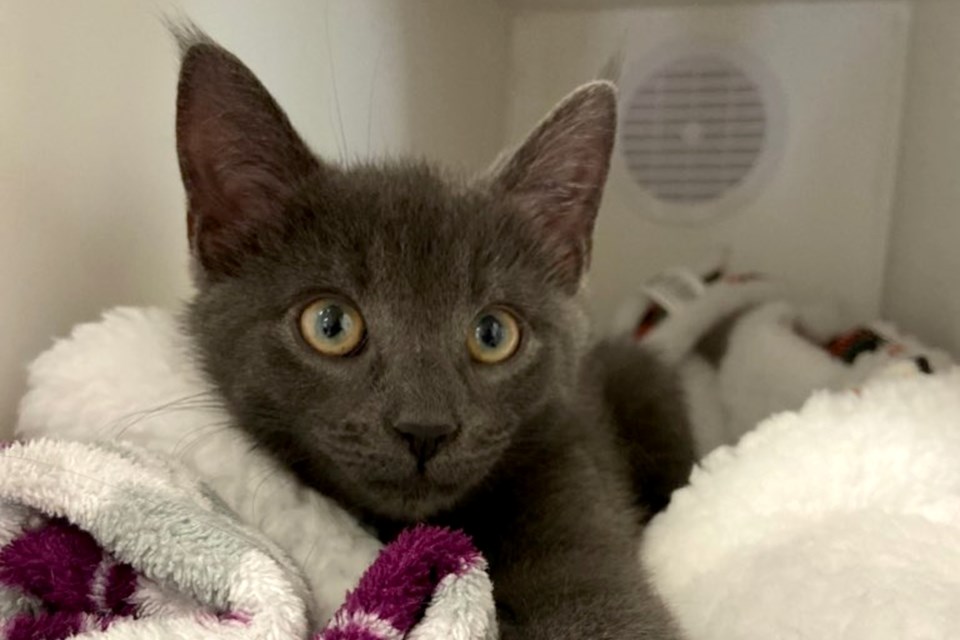Unsurprisingly, cat visits to the veterinarian are significantly less common than dog visits.
Most cats aren’t going to be fooled by a high-pitched voice and a liver treat to get them into the clinic, wagging their tail on the scale so hard you can barely read the weight. (Side note – be very wary if a cat is wagging their tail at you. They are not usually happy.)
Statistically speaking, only 46 per cent of cats are seen for regular veterinary appointments, compared to 77 per cent of dogs.
There are usually two reasons cat owners are hesitant to bring in their cats:
“My cat is at low risk and doesn’t need vaccines,” and/or, “the visits are too stressful for my cat.”
Why? How?
Let’s start with the why. Does your cat need vaccines? Yes. Does your cat need all of the vaccines? Maybe not, your veterinarian can discuss your cat’s lifestyle with you and see what is right for your cat.
Generally, if your cat goes outside, they need to be vaccinated and on parasite prevention to protect them. If your cat goes outside on a leash or in a “cat-io” they are still at risk and should be protected.
But what about our indoor cats? Do they still need vaccinations? Yes. As mentioned in my article on vaccines, rabies vaccination is required by Ontario bylaws for all domestic cats, dogs and ferrets.
While their risk of contracting diseases and parasites is low, it’s not impossible. Especially if they live with a dog.
The real problem with the “Garfield doesn’t need vaccines so he doesn’t need to go to the vet” line of thinking is that at some point, the vaccines became thought of as the most important part of the annual examination, probably because they are the most visual part of the appointment.
However, the physical exam is what is important. It starts before your vet even has hands on your cat. We watch their behaviour in their carrier, their mobility around the exam room etc.
Cats are a prey species; they are masters at hiding pain and illness to protect themselves. The physical exam can give us key clues that something is wrong before it is emergent. Having regular visits allows us to see patterns and hopefully intervene early.
So now the big question: how do you get a cat to the vet with minimal stress?
Cats are very territorial and often do not like to leave their home, so any travel can be stressful. Being at the vet with a stranger petting them, picking them up, the dog barking in the next room, is stressful for them. It is. We know that. But we also know how to reduce that stress.
The stress for the veterinary visit for cats starts at home with the giant flashing warning sign that something is happening: the carrier. A carrier is imperative to getting your cat to the vet safely. They are safe in the car and protected on their way into the clinic from other pets.
The last thing you want to happen is your cat to get spooked in a vet clinic parking lot and jump out of your arms and disappear for three months. (This is a true story.)
An easy way to take the fear out of the carrier is to train your cat that it’s not a bad thing. Keep it out all the time, using it as a cat bed by keeping the door off is a great way to teach your cat that it’s not something to be scared of.
Put a blanket and some treats in there so they are comfortable with it. Having a crate that can be taken apart or one where the base slides out so they can stay in there where they are comfortable are great options.
Get your cat used to being handled. Cut their nails, play with their toes, look at their ears, lift their lip. All this makes the things done at the vet a lot less abnormal for them and reduces stress. You can even bring treats, canned food or a favourite toy to the appointment to help make them more at ease.
Even with all this, some cats just get scared and stressed. Talk with your veterinarian. There are pheromone sprays and anti-anxiety medications that can be prescribed to make your cat’s visit as calm as possible for them, so they can live the long healthy life they deserve.
Dr. Courtney Andrews is a veterinarian at Lockerby Animal Hospital, a graduate of the Royal School of Veterinary Studies and dog mom to Argyll and Einstein. Animals & Pets is made possible by our Community Leaders Program.



